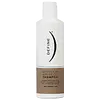What's inside
What's inside
 Key Ingredients
Key Ingredients

No key ingredients
 Benefits
Benefits

 Concerns
Concerns

 Ingredients Side-by-side
Ingredients Side-by-side

Water
Skin ConditioningSodium Laureth Sulfate
CleansingCocamidopropyl Betaine
CleansingSodium Chloride
MaskingGlycol Distearate
EmollientGlycerin
HumectantArgania Spinosa Kernel Oil
EmollientAcrylates Copolymer
Guar Hydroxypropyltrimonium Chloride
Skin ConditioningSodium Sulfate
Monosodium Citrate
BufferingCitric Acid
BufferingSodium Hydroxide
BufferingSodium Benzoate
MaskingParfum
MaskingCI 15985
Cosmetic ColorantCI 14700
Cosmetic ColorantCI 42051
Cosmetic ColorantWater, Sodium Laureth Sulfate, Cocamidopropyl Betaine, Sodium Chloride, Glycol Distearate, Glycerin, Argania Spinosa Kernel Oil, Acrylates Copolymer, Guar Hydroxypropyltrimonium Chloride, Sodium Sulfate, Monosodium Citrate, Citric Acid, Sodium Hydroxide, Sodium Benzoate, Parfum, CI 15985, CI 14700, CI 42051
Water
Skin ConditioningCetyl Alcohol
EmollientStearyl Alcohol
EmollientMelaleuca Alternifolia Leaf Oil
AntioxidantMentha Piperita Oil
MaskingRosmarinus Officinalis Leaf Extract
AntimicrobialMenthol
MaskingEucalyptus Globulus Leaf Oil
PerfumingAloe Barbadensis Leaf Juice
Skin ConditioningLavandula Angustifolia Flower/Leaf/Stem Extract
MaskingPropanediol
SolventSalvia Officinalis Leaf Extract
CleansingChamomilla Recutita Flower Extract
MaskingThymus Vulgaris Extract
PerfumingParfum
MaskingPhenoxyethanol
PreservativePanthenol
Skin ConditioningCetrimonium Bromide
AntimicrobialEthylhexylglycerin
Skin ConditioningWater, Cetyl Alcohol, Stearyl Alcohol, Melaleuca Alternifolia Leaf Oil, Mentha Piperita Oil, Rosmarinus Officinalis Leaf Extract, Menthol, Eucalyptus Globulus Leaf Oil, Aloe Barbadensis Leaf Juice, Lavandula Angustifolia Flower/Leaf/Stem Extract, Propanediol, Salvia Officinalis Leaf Extract, Chamomilla Recutita Flower Extract, Thymus Vulgaris Extract, Parfum, Phenoxyethanol, Panthenol, Cetrimonium Bromide, Ethylhexylglycerin
 Reviews
Reviews

Ingredients Explained
These ingredients are found in both products.
Ingredients higher up in an ingredient list are typically present in a larger amount.
Parfum is a catch-all term for an ingredient or more that is used to give a scent to products.
Also called "fragrance", this ingredient can be a blend of hundreds of chemicals or plant oils. This means every product with "fragrance" or "parfum" in the ingredients list is a different mixture.
For instance, Habanolide is a proprietary trade name for a specific aroma chemical. When used as a fragrance ingredient in cosmetics, most aroma chemicals fall under the broad labeling category of “FRAGRANCE” or “PARFUM” according to EU and US regulations.
The term 'parfum' or 'fragrance' is not regulated in many countries. In many cases, it is up to the brand to define this term.
For instance, many brands choose to label themselves as "fragrance-free" because they are not using synthetic fragrances. However, their products may still contain ingredients such as essential oils that are considered a fragrance by INCI standards.
One example is Calendula flower extract. Calendula is an essential oil that still imparts a scent or 'fragrance'.
Depending on the blend, the ingredients in the mixture can cause allergies and sensitivities on the skin. Some ingredients that are known EU allergens include linalool and citronellol.
Parfum can also be used to mask or cover an unpleasant scent.
The bottom line is: not all fragrances/parfum/ingredients are created equally. If you are worried about fragrances, we recommend taking a closer look at an ingredient. And of course, we always recommend speaking with a professional.
Learn more about ParfumWater. It's the most common cosmetic ingredient of all. You'll usually see it at the top of ingredient lists, meaning that it makes up the largest part of the product.
So why is it so popular? Water most often acts as a solvent - this means that it helps dissolve other ingredients into the formulation.
You'll also recognize water as that liquid we all need to stay alive. If you see this, drink a glass of water. Stay hydrated!
Learn more about Water